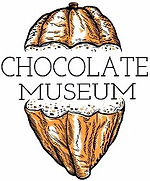

Week 10 - The first solid chocolate
J for Joseph Fry
Joseph Fry trained as an apothecary and came to Bristol seeking opportunity when its ports were busy places for trading with ships bringing back all sorts of merchandise such as cocoa beans from the colonies.
Fry started his apothecary business in 1753 with jars of leeches in his windows and cocoa he was promoting as a healthy drink and a highly nutritious alternative to alcohol. It was soon sold to the aristocracy in coffee houses.
He improved the quality of this cocoa drink by buying the patent for a water-powered machine that Churchman chocolate brand had, grinding cocoa beans in a much finer powder than his. He was also very inventive, he hired sales agents to sell his products to more than 50 different towns, and soon opened a warehouse in London and became the largest commercial producer of chocolate in Britain, transforming more than 40% of the cocoa imported to Britain in his factory.
His son, Joseph Storrs Fry, inherited the cocoa business in 1795 and continued in his father’s footsteps, improving the method of grinding cocoa beans using a Watt steam engine, and soon after inventing a new machine to roast the cocoa beans.
The 3rd generation of Fry’s pioneered new brands of cocoa drinks making them cheaper with less sugar for the poorer households, and of better quality and finer texture for the upmarket. They came to supply the British Navy as it was an easy product to transport in tins, and was warming and filling for the troops.
In 1847, after mixing a paste made of their cocoa powder, sugar and cocoa butter and letting it set in a mould, the very first solid chocolate was created. It was bitter, coarse and hard to eat but it was the first kind of chocolate that could be eaten instead of being consumed as a drink. They called it “chocolat delicieux a manger” in French, meaning chocolate delicious to eat.
This led to “Fry’s Delectable Chocolate-coated cream stick” in 1853; a minty sugar cream (fondant) cut into sticks and dipped into dark chocolate, and in 1866 remodelled into a thinner shape and called “Fry’s Chocolate Cream” as it is still sold today in different flavours: mint, orange, strawberry and raspberry.
After that, more than 200 other products were added to the production, including the chocolate Easter egg in 1873. By World War I, the company was one of the largest in Bristol. Following J.S. Fry's death in 1913, the business was merged with Cadbury's in 1919. Fry's Factory was closed in 2010.
References: "Chocolate Wars" by Deborah Cadbury
To download files
BUTTONS



A-Z MENU



LETTER K
We thank you for your participation,
Programme in partnership with Melange Chocolate
Principal Sources:
"The True history of Chocolate" Thames & Hudson
"Encyclopedie du chocolate et de la confiserie" AFCC
"Collecting the World: The Life and Curiosity of Hans Sloane" by James Delbourgo
"Chocolate Wars" by Deborah Cadbury


